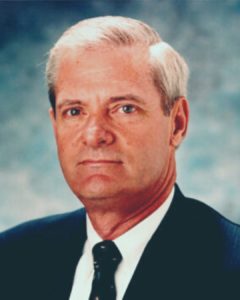A 60-year veteran of the field shares his most valuable insights for the future of the capital projects industry
 With more than 60 years of hands-on experience in capital projects, James B. Porter, Jr. now helps organizations make significant, sustainable improvements in workplace safety, process safety management, and operational excellence. Jim joined DuPont in 1966 as a chemical engineer and held multiple executive positions leading to his appointment as Chief Engineer and Vice President of Engineering and Operations. He has served as chair of the Construction Industry Institute (CII) and he was the 2004 recipient of CII’s Carroll H. Dunn Award of Excellence. In 2005 he received the Engineering and Construction Contracting Association Achievement Award, and in 2008 he was the first recipient of FIATECH’s James B. Porter, Jr. Award for Technology Leadership. He is a member of several boards of directors and was on the Argonne National Laboratory Board of Governors. He holds a Bachelor of Science degree in Chemical Engineering from the University of Tennessee.
With more than 60 years of hands-on experience in capital projects, James B. Porter, Jr. now helps organizations make significant, sustainable improvements in workplace safety, process safety management, and operational excellence. Jim joined DuPont in 1966 as a chemical engineer and held multiple executive positions leading to his appointment as Chief Engineer and Vice President of Engineering and Operations. He has served as chair of the Construction Industry Institute (CII) and he was the 2004 recipient of CII’s Carroll H. Dunn Award of Excellence. In 2005 he received the Engineering and Construction Contracting Association Achievement Award, and in 2008 he was the first recipient of FIATECH’s James B. Porter, Jr. Award for Technology Leadership. He is a member of several boards of directors and was on the Argonne National Laboratory Board of Governors. He holds a Bachelor of Science degree in Chemical Engineering from the University of Tennessee.
OLFA HAMDI: Tell us a little bit about yourself, beyond your bio. What are some of the highlights of your long career in capital projects?
JAMES PORTER: I think my first real career highlight came when I began to understand that, inside DuPont, we really did have issues with our projects. We were spending too much money on them for the results we were expected to get, and I set out to understand why. I was able to discover what was causing the problem, and to help change the way we funded projects. I think the second highlight was when I got the opportunity to help create an industry consortium to provide leadership in developing and integrating automated technologies in capital projects, which ultimately ended up being FIATECH.
OH: It’s interesting that cost management comes up first, I know this has been a key focus for you throughout your career. In terms of on-budget capital project delivery, how are we doing as an industry?
JP: As an industry, we know how to do projects well. The information is out there. As far as actual execution goes, it’s a mixed bag. Some companies have the discipline to follow best practices, so they get better results. But you still have a huge portion of the industry where decisions are made by people who really don’t understand projects.
I like to reference Ed Merrow’s concept of “opportunity shaping” from his Industrial Megaprojects book. He talks about opportunity shaping on large projects, and the same kind of work needs to happen inside companies: identifying responsibilities, establishing accountabilities and ultimately determining the value out in terms of what people get for the result. Whether it’s a $10 million project, or it’s a $5 billion project, the process and the activities are essentially the same.
OH: You and I have spoken in the past about the importance of on-time, on-budget capital project delivery and the value of Predictability Thinking™, particularly the need to move away from an absolute reliance on lagging indicators and toward more leading indicators of success. (Editor’s Note: Lagging indicators measure past performance, leading indicators measure future performance. Your weight today is a lagging indicator of your eating habits last week, and your food choices today are a leading indicator of your weight next week. For a complete exploration of this topic, see Why Predictability Thinking Works.)
JP: The notion of developing leading indicators around project activities is a step forward in terms of understanding where you are on a project and what the next step should be in order to create the greatest value for resources invested. A danger of the disciplined stage gate process is you can become progress driven and dilute your business effective perspective on a project’s tendencies. If you applied tools such as Predictability Thinking™ you’d be able to model and develop a project specific set of leading indicators.
In my experience, safety performance is worse on construction rework. That’s reason enough to have an effective capability to better predict risks that drive changes.
James Porter Tweet
OH: Absolutely. We’re not saying the stage gate system is bad — it’s a very good process — we’re saying we need to complete it with more proactive assurance mechanisms, including leading measures. Now, to keep on with our predictability theme: In your experience, what has the biggest impact on predictable project delivery?
JP: Changes. If you can’t predict that you’re going to be able to do it without any significant change, then stop and do something to eliminate the risk associated with change. Change has all kinds of unintended consequences, creating unwanted safety, cost, schedule and quality problems. As an example, in my experience, safety performance is worse on construction rework. That’s reason enough to have an effective capability to better predict risks that drive changes.
OH: That’s very interesting, the idea that changes are an indicator of lack of predictability. It’s a very important piece. What advice would you give to a capital project organization executive to put their organizations on a path to better project performance?
JP: You’ve got to have documented standards and processes, and you have to provide training. You can’t just tell people to go do something, you have to give them the tools and resources necessary to do it in a disciplined way. When I’ve done consulting with owner firms who want to improve their project management process, my first question is: “Are your work processes documented?” My second question is: “Describe your existing engineering organization.” Many companies have undocumented work processes and understaffed engineering departments. That’s where we start.
OH: What is your take on the connection between culture, leadership, safety and predictable project delivery?
JP: In my view, corporate culture is what people do when nobody’s watching and ultimately boils down to actions and behaviors. These in turn influence relationships and ultimately trust. If the level of trust between and among project team members, including sponsors, isn’t high, there is a heightened probably of issues that will negatively affect project performance.
Trust is directly related to the quality of relationships and competency of the team members. It’s inversely proportional to risks. So, as you develop more collaborative work processes and approaches, you enable team members to have a shared understanding of performance and business risks. The effect of this allows a focus in eliminating or reducing risks. As risk goes down, trust tends to rise. When you have a high level of trust, you need fewer resources, you make fewer changes, and have fewer unwanted incidents and outcomes.
OH: Good stuff indeed. One last question on the topic of capital project management: Does size matter, when it comes to how we manage projects?
JP: If you listen to a project, the project will tell you how it wants to be executed. You need to understand the fundamentals of capital project management, but you should match your approach to project specific requirements. There is no such thing as a copy job; every project is unique.
Beyond that, no, I don’t think size really matters. Generally speaking, the larger a project gets the more complex it becomes, but I’ve had $10 million jobs where there was more nonvalue adding work than $200 million ones.
OH: Excellent. I’d like to conclude with a question about training and development. How are we doing, as in industry, in attracting new talent? What can we do better?
JP: We need to work more closely with academia to ensure that new graduates have the skills they need for the real world. A chemical engineer should not come out of college without any understanding of how to apply their skills to capital projects. Internship programs can help here, as can professional training. For example, the American Institute of Chemical Engineers now offers training to help new graduates understand project management basics. For more sophisticated training in Advanced Work Packaging and Workface Planning, companies like yours are an excellent choice.
OH: Thank you so much, it is so generous of you to share your time.
JP: My pleasure. Thank you.





